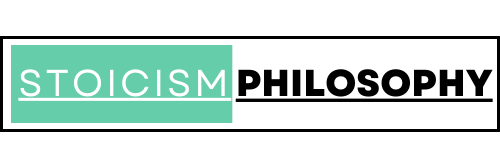Symbols for Stoicism: Stoicism, a philosophy that originated in ancient Greece, has had a profound impact on Western thought and culture. Its teachings on the importance of reason, self-control, and inner strength have influenced many prominent thinkers and leaders throughout history.
One of the lesser-known yet crucial aspects of Stoicism is its use of symbols to convey its core principles and values. These symbols, often visually striking and rich in meaning, serve as powerful reminders of the philosophy’s guiding principles and offer a tangible connection to its timeless wisdom.
In this article, we will delve into the world of symbols for Stoicism, exploring their origins, meanings, and significance within the context of the philosophy.
We will examine the most well-known symbols, including the lotus flower, anchor, caduceus, owl, labyrinth, sun, ship, turtle, oyster, and bow, as well as some lesser-known symbols that are equally important in understanding Stoic thought.
Symbols for Stoicism:
The Lotus Flower: Serenity and Inner Strength
The lotus flower is one of the most iconic symbols of Stoicism, representing serenity and inner strength. This flower, known for its ability to bloom in the most challenging environments, symbolizes the Stoic ideal of finding peace and tranquility amidst turmoil.
The lotus flower also represents the cyclical nature of life, where growth and decay are intertwined, reflecting the Stoic concept of living in harmony with nature.
The Anchor: Stability and Perseverance
The anchor is another powerful symbol of Stoicism, representing stability and perseverance. This symbol is often associated with the idea of holding fast to one’s principles and values, even in the face of adversity.
The anchor also represents the Stoic concept of living in accordance with nature, where one must adapt to the changing circumstances of life while remaining steadfast in one’s convictions.
The Caduceus: Wisdom and Balance
The caduceus, a staff with intertwined snakes, is a symbol of wisdom and balance in Stoicism. This symbol represents the harmony between reason and emotion, as well as the balance between the individual and the world around them.
The caduceus also symbolizes the Stoic concept of living in accordance with nature, where one must find balance and harmony within oneself and with the world.
The Owl: Wisdom and Insight
The owl is a symbol of wisdom and insight in Stoicism, representing the ability to see beyond the surface level of reality. This symbol is often associated with the idea of gaining wisdom through experience and reflection, as well as the importance of being aware of one’s surroundings and the potential dangers that may lie ahead.
The Labyrinth: Complexity and Inner Reflection
The labyrinth is a symbol of complexity and inner reflection in Stoicism, representing the idea that life is full of twists and turns that require careful navigation. This symbol is often associated with the concept of self-reflection and the importance of understanding one’s own thoughts, emotions, and motivations.
The Sun: Light and Guidance
The sun is a symbol of light and guidance in Stoicism, representing the idea of illuminating the path forward and providing direction in times of uncertainty. This symbol is often associated with the concept of living in accordance with nature, where one must follow the natural order of things and trust in the universe’s plan.
The Ship: Navigation and Perseverance
The ship is a symbol of navigation and perseverance in Stoicism, representing the idea of navigating through life’s challenges and staying the course despite obstacles and setbacks.
This symbol is often associated with the concept of living in accordance with nature, where one must adapt to the changing circumstances of life while remaining steadfast in one’s convictions.
The Turtle: Patience and Endurance
The turtle is a symbol of patience and endurance in Stoicism, representing the idea of moving slowly and steadily through life’s challenges. This symbol is often associated with the concept of living in accordance with nature, where one must be patient and persistent in the face of adversity.
The Oyster: Inner Serenity and Protection
The oyster is a symbol of inner serenity and protection in Stoicism, representing the idea of cultivating peace of mind and protecting oneself from the outside world. This symbol is often associated with the concept of living in accordance with nature, where one must find balance and harmony within oneself and with the world.
The Bow: Perfection and Harmony
The bow is a symbol of perfection and harmony in Stoicism, representing the idea of achieving balance and harmony within oneself and with the world. This symbol is often associated with the concept of living in accordance with nature, where one must find balance and harmony within oneself and with the world.
Conclusion
In conclusion, the symbols for Stoicism offer a powerful way to connect with the philosophy’s core principles and values. These symbols, often visually striking and rich in meaning, serve as powerful reminders of the philosophy’s guiding principles and offer a tangible connection to its timeless wisdom.
By understanding the meanings behind these symbols, we can better appreciate the depth and complexity of Stoic thought and its relevance to our modern lives.
As we navigate the challenges of the 21st century, the symbols for Stoicism offer a valuable guide for living a life of inner strength, wisdom, and balance.
By embracing these symbols and the principles they represent, we can cultivate a deeper sense of purpose and meaning, and find greater fulfillment in our personal and professional lives.
